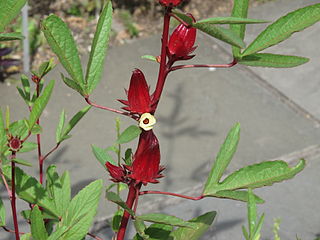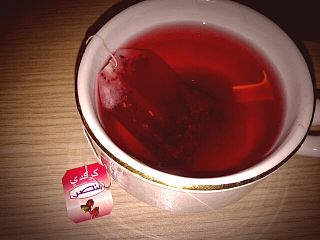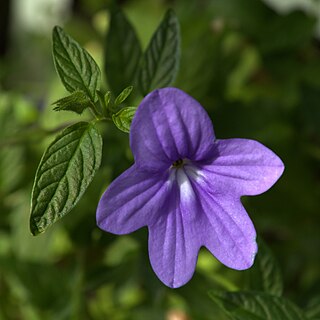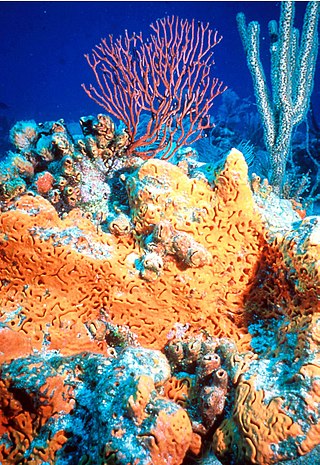
A sepal is a part of the flower of angiosperms. Usually green, sepals typically function as protection for the flower in bud, and often as support for the petals when in bloom.
The renal sinus is a cavity within the kidney which is occupied by the renal pelvis, renal calyces, blood vessels, nerves and fat. The renal hilum extends into a large cavity within the kidney occupied by the renal vessels, minor renal calyces, major renal calyces, renal pelvis and some adipose tissue.
Calyx or calyce, from the Latin calix which itself comes from the Ancient Greek κάλυξ (kálux) meaning "husk" or "pod", may refer to:

The renal calyces are conduits in the kidney through which urine passes. The minor calyces form a cup-shaped drain around the apex of the renal pyramids. Urine formed in the kidney passes through a renal papilla at the apex into the minor calyx; 4-5 minor calyces converge to form a major calyx through which urine passes into the renal pelvis.

The renal pelvis or pelvis of the kidney is the funnel-like dilated part of the ureter in the kidney. It is formed by the convergence of the major calyces, acting as a funnel for urine flowing from the major calyces to the ureter. It has a mucous membrane and is covered with transitional epithelium and an underlying lamina propria of loose-to-dense connective tissue.

Roselle is a species of flowering plant in the genus Hibiscus that is native to Africa, most likely West Africa. In the 16th and early 17th centuries it was spread to Asia and the West Indies, where it has since become naturalized in many places. The stems are used for the production of bast fibre and the dried cranberry-tasting calyces are commonly steeped to make a popular infusion known by many names, including carcade.

Hibiscus tea is a herbal tea made as an infusion from crimson or deep magenta-colored calyces (sepals) of the roselle flower. It is consumed both hot and cold. It has a tart, cranberry-like flavor.

Browallia is a small genus of seven species of flowering plants belonging to the nightshade family Solanaceae. It is named after Johannes Browallius (1707–1755), also known as Johan Browall, a Swedish botanist, physician and bishop. The genus is closely related to the monotypic genus Streptosolen, the single species of which was published initially under the name Browallia jamesonii.
In Greek mythology, Calyce or Calycia is the name of several characters.
Kenyon cells are the intrinsic neurons of the mushroom body, a neuropil found in the brains of most arthropods and some annelids. They were first described by F. C. Kenyon in 1896. The number of Kenyon cells in an organism varies greatly between species. For example, in the fruit fly, Drosophila melanogaster, there are about 2,500 Kenyon cells per mushroom body, while in cockroaches there are about 230,000.
Calyce is a genus of beetles in the family Mordellidae, containing the following species:
Calyce bicolor is a species of beetle in the Calyce genus. It was found in 1922.
Calyce cardinalis is a species of beetle in the Calyce genus. It was discovered in 1922.
Calyce fulva is a species of beetle in the Calyce genus. It was discovered in 1891.
Calyce langeri is a species of beetle in the Calyce genus. It was discovered in 1942.
Calyce maculata is a species of beetle in the Calyce genus. It was discovered in 1911.
Calyce reginae is a species of beetle in the Calyce genus. It was discovered in 1942.

Plexaurella nutans, the giant slit-pore sea rod, is a tall species of soft coral in the family Plexauridae. It is a relatively uncommon species and is found in shallow seas in the Caribbean region.
Aloysia fiebrigii is a species in the genus Aloysia in the family Verbenaceae. It is native to high elevation in the Andes of Bolivia.
Cenaspis aenigma is a species of colubrid snake in the subfamily Dipsadinae and the only member of the monotypic genus Cenaspis. It is endemic to the highlands of western Chiapas, Mexico, where it was described from a single, partially digested male specimen found in the stomach of a Central American coral snake. This is referenced in its generic name, as cena is Spanish for "dinner". Despite being partially digested, the specimen still displayed many unique traits, including undivided subcaudals for the full length of the tail, as well as a simple hemipenis completely covered in calyces with a largely non-bifurcated sulcus spermaticus. These traits are not known from any other colubroid snake in the Western Hemisphere.






